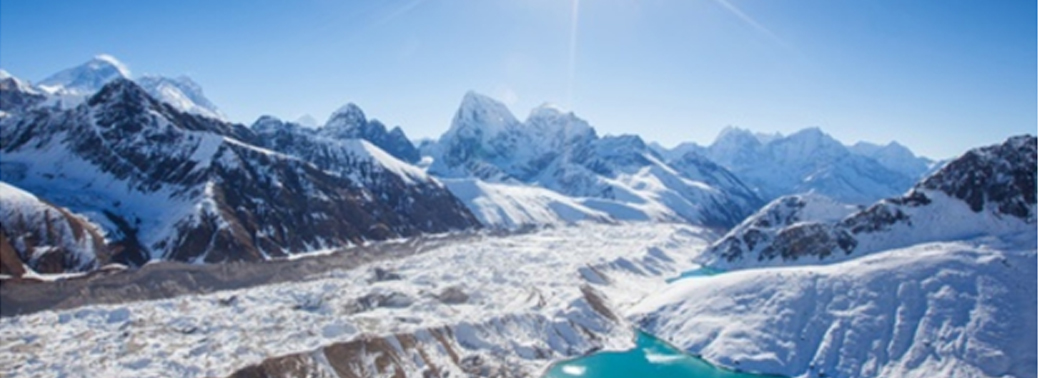By: Deepa Bhatt
“Efforts should be from local to global level with the corroboration of every stakeholder’s participation, opinions and decision-making.”

What is Climate Change?
Climate change refers to the significant change in the average weather in the due course of time on the earth or in any part of it due to the fluctuation in atmospheric temperature, wind, flow, rainfall. It is a sudden change in the climate pattern of the earth, mainly due to the rise in temperature of the atmosphere. The excessive use of coal, petroleum products, firewood, and natural gas, through industries, transportation and intensified agriculture increases greenhouse gases, like carbon dioxide, methane, sulphur dioxide, nitrous oxide in the atmosphere disrupting the natural environment and its process. These gases form a layer in the upper atmosphere which absorbs more heat, also referred to as the greenhouse effect. As some of these gases can retain more and some less temperature, the gases in the atmosphere fluctuate depending on change in the amount of gases. During the past 30 years the temperature of Nepal has been increased by 0.6 degree Celsius. Climate change has caused a rise in temperature, flood and drought imposing a negative impact on the health of people and the planet.
Impacts on biodiversity
The climate and biodiversity both are interrelated, thus understanding its interaction is essential to understand the response of ecosystems to the current changing climate. Some of the its unprecedented effects are as follows:
1. Loss of Habitat
Our beautiful mountains have turned into rocky and barren surfaces due to the increased rate in snow melt. Ice sheets are over-melting and sea level is rising which will endanger the coastal areas and islands to submerge under water. Source of water-rivers originating from the snow-capped mountains are drying up. Similarly, signs of desertification have been seen in rain-shed areas like Manang and Mustang of Nepal. An article in “The Guardian”, states findings of a study that 5500 glaciers in Mt. The Everest region is likely to disappear by 2100 AD.

2. Extinction of Species
Several models have been developed to predict the impact of climate change in biodiversity which suggested alarming consequences for biodiversity predicting. For example, about 50% of loss of some animals in Africa and 90% of coral reefs is predicted by the end of the century (Harvey, 2018). Likewise, an article published in ‘The Guardian’ stated the diminishment of about 8,400 Koalas in the 2019 bushfire in Australia, accounting to 30% of the total Koala population. Moreover, the bushfire has been found to be triggered by climate change up to 30% which clearly indicates climate change as a major driver in such extreme atmospheric conditions (Ghosh, 2020). Such conditions have been predicted at least four times more often in case of rise in global temperatures by 2°C.
3. Alter the Distribution of Flora and Fauna
Shift in habitat, lifecycles, effect on breeding capacity and development of new physical traits are other consequences of climate change. For example, global warming is presumably associated with the largest-ever outbreak of dengue in 2019 in Nepal (Adhikari and Subedi, 2020). Moreover, the direction, frequency, and intensity of biotic interaction can be altered.
4. Alter the Phenology
Changing timing in reproduction animals and plants, migration pattern of animal, length of growing season, flowering, and fruiting pattern. The temperate fruits like apples, peaches, etc. are worst affected. In Nepal, the apple growing area is decreasing because global warming has affected the chilling requirement and hence flowering in apples.

What could be the Remedial Measures?
- Minimizing the emissions of greenhouse gases by generating hydroelectricity and encouraging its use, and focuses on alternative sources of energy, such as solar and wind.
- Reducing the use of coal, firewood and petroleum products.
- Controlling emissions from industries.
- Reduce personal and organizational carbon footprint.
- Terminate deforestation and restore degraded lands with an increased focus towards conservation of biodiversity.
Conclusion
Climate change is a burning and serious threat to the World. With excessive burning of fossil fuels and consumption of energy, the productions of greenhouse gases are relatively higher in developed countries than in developing countries. Therefore, developed countries are more responsible for climate change. Shift to clean energy should be a priority of all the countries as soon as possible to mitigate the adverse effects of climate change on biodiversity, ecosystem, and livelihoods. Policy formulation along with its effective implementation is a must for fighting climate change. So, efforts should be from local to global level with the corroboration of every stakeholder’s participation, opinions and decision-making.
About writer: Deepa Bhatt is the Treasurer of NYCA Baitadi. She is also pursuing her bachelors degree in Agriculture in Gokuleshwor Agriculture and Animal science college. Reach her @deepabhatt1o2o@gmail.com
References
Adhikari, N. and Subedi, D. (2020). The alarming outbreaks of dengue in Nepal. Tropical Medicine and Health. 48 (5).
Cave, D. and Ripka, L. A. (2020). Fires threaten Australian towns that have Already Burned once. https://www.nytimes.com/2020/01/09/world/australia/fires.html
Ghosh, P. (2020). Climate change boosted Australia bushfire risk by at least 30%. https://www.bbc.com/news/science-environment-51742646
Harvey, C. (2018). Climate Change Is Becoming a Top Threat to Biodiversity. https://www.scientificamerican.com/article/climate-change-is-becoming-a-top-threat-to-biodiversity/
The Guardian (2019). Australia’s environment minister says up to 30% of koalas killed in NSW mid-north coast fires. https://www.theguardian.com/australia-news/2019/dec/27/australias-environment-minister-says-up-to-30-of-koalas-killed-in-nsw-mid-north-coast-fires
Leave a comment